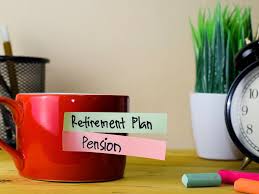Summary
In just a few minutes, you’ll be part of that in-the-know minority, that knows all about retirement planning and the importance of it for an individual.
• Retirement planning and preparations should include defining time limits, estimation of expenses, understanding and determining how much would be required each month after tax deductions, appetite towards risk, and undertaking real estate investment and planning.
• The formulation of retirement plans should start at the same time you start earning as much that you are in a position to save some and that saving can be put away for a longer-term.
• The younger you are you can be more experimental with your money and investment choices, while the older you get the choices to save investments with safe returns becomes your choice.
• There is a constant evolution of your retirement plan, but the seed needs to sow as soon as you starting to mature your budding career, that a piece of advice that you share to take with you today…
• A penny saved is a penny earned, it gives a clear indication that the money you shall save today would enable your peaceful and prosperous future.
So…
Thinking about retirement never comes easy, and while we are all young and energetic that doesn’t seem very attractive and seems like a redundant thought at an initial level of your career you have other priorities but it is important to remember that putting some money aside in the young age when you have more avenues to earn and can put in more energy in increasing the revenue cycle.
If all you’ve ever done to plan for retirement is dream about which beach you’ll be spending it on, you’re not alone.
According to the 2017 Retirement Confidence Survey from the Employee Benefit Research Institute, only 4 in 10 workers say that they and/or their spouse have ever tried to figure out how much money they need to save for retirement. But planning for retirement is a key part of saving enough money to enjoy retirement.
What should be the first step to Retirement and way forward?
There are few more pertinent factors and actions to undertake, throughout your professional life than saving and capitalizing money for retirement. Very few of us have the luck to have access to pensions anymore. Being in Pakistan we know that the only way to a comfortable lifestyle, it’s 100% up to us to ensure that we have enough savings and reserves to support ourselves when we’re no longer working.
We have tried to make the most comprehensive guide on why is it important to save? When should you start saving? How you can most effectively save and invest for your retirement? You can also share this blog with anyone else who might need this guidance and revisit it yourself once in a while to ensure that you’re still on track.
All of these concerns are addressed in the body below
• How much income do you need in retirement?
• How to calculate how much money to save for retirement
• The power of long-term investing for retirement
• Are you ready to invest for retirement?
• How to retire early
One of the questions that we come across is what would be the “JUST RIGHT”
How much income do you need in retirement?
The best way to start your retirement arrangement is by estimating and forecasting based on your today to know how much income you’ll need each year to reach your retirement goals. This also depends on you and the lifestyle you pursue instance; if you live somewhere with where the cost of living is low, if you enjoy inexpensive hobbies, and don’t need much medical care and assistance. These all points go in your favor and you shall need lesser income than average retiree.
But…
If your plan post-retirement is about all splendid and luxurious amenities like wandering the world or golfing every day, or if you require high healthcare costs, then you may need financial reserves a lot more than average retirees. One thing that’s important to ballpark how much money you’ll be needing each year keeping the cost of things around you means inflation in perspective, as that will help you determine how much money you need to save before you retire.
Here are some factors to consider to plan your post-retirement life
• Your expected expenses: Most Pakistanis usually require some assets in place when they retire from which they can have a certain stream of income, although they don’t need to worry much about the day to expense since there is a prevailing culture in Pakistan where children usually are with their parents and facilitate any need that may arise but at the same time. It’s good to have some savings and investments in place to be self-sufficient. Again, though, every retiree’s situation is not the same. And while some of the costs will likely decline, but it is expected that your healthcare costs to rise as you grow older. According to multiple surveys and research, it has been seen that your health care bill increases many folds as you retire and age, so one thing that can be done with your retirement sum is to get “Parents health policy”, it does not only provides you safety in the face of uncertainty but it also covers some percentage of your pre-existing conditions providing cushion to your retirement money to a great extent.
• Longevity: life is unpredictable, you don’t know what will happen next then you’ll need your savings to last a longer-than-average time to prepare yourself for everything. If you’re very health conscious and eat well and have relatives who made it to their 90s, although that is no guarantee at least that is one of the indications you’d do well to have an extra-large retirement account, as there’s a good chance it will have to support you for a long time. Retiring at the age of 60 and living to 85 means 25years of retirement!
• Inflation: It is an important cause and is often ignored, but it can shrink the purchasing power of your future needs and requirements. If the income you live on in retirement is truly fixed means what you suppose to get on day 1 would be the same after 10 years of your retirement and stays so for decades, you may face difficulties in your later years.
• Over long periods, inflation has been rampantly increasing annually, enough to make something that costs around PKR 1000 now cost about PKR 2500 in 20 years.
There’s no one-size-fits-all way to arrive at your estimated income need. You might start with the rule of thumb that you’ll need about 80% of your current income to maintain your current lifestyle. Thus if you earn $65,000 annually, you’d aim for an income of $52,000 in retirement. However, it’s a bit risky to rely on such a rule without crunching a bunch of numbers and taking into account factors such as the ones above.
How to calculate how much money to save for retirement
Once you have an estimate of how much annual income you’ll need when you retire, one prevalent question would be how can you use that to determine how big your nest egg should be when you retire?
Well, first-out down all the sources of your expected sources of retirement income. Imagine, for example, that you want a certain amount and let suppose you have a pension so some of the chunks will come from your pension account rest may come from your investment plan that ideally you should have in place to support yourself and spouse after the retirement, it may not seem very important now but it has a crucial role when the cash is needed for day to day expenditures and support. These investment plans are easy to pay through and have good returns on your money. At this point, you might employ another rule of thumb, the 4% rule. It’s not perfect, but it can give you a rough idea of how much money you might need to save, and that can be a good place to start. The 4% rule states that if you withdraw 4% from your nest egg in your first year of retirement, and then adjust that for inflation each year, you stand very little chance of exhausting your savings. Based on that guidance, you can easily figure out what your target savings amount might be: Just multiply your desired annual income by 25. In the example above, that means your savings goal would be PKR 600,000 times 25, PKR 15,000,000.
If you’re very much not the risk-taker type, you may plan to withdraw just 3% annually, in which case you’d multiply your desired income by 33, arriving at a savings goal of PKR 19,800,000. If you’re self-confident that inflation will remain low and your investments will perform well for you, you might plan to withdraw 5% annually, in which case you’d multiply your desired income by just 20 for a savings target of your choice. Be vigilant, though, as the stock market and the economy never perform exactly as we expect. It’s recommended to use the 4% rule as a self-sketched guide but then adjust the results, taking into account your circumstances, needs, risk-taking ability, health, expected longevity, and other factors that you might want to consider looking at your circumstances.
The power of long-term investing for retirement
It’s helpful to have a good sense of just how much your money can multiply for you. You can see that the longer period the faster your money will grow, the faster it will grow giving you returns, and each extra year (or five years) can make a big difference in your overall wealth status. Meanwhile, relatively small annual investments can add up to a lot if they have enough time to grow. The bottom line is that the more you can save, the better off you’ll be in retirement.
Are you ready to invest for retirement?
Before you start planning for your retirement and investment options to make your money grow, there are a few important to-be-done to check off your list. Here are a few questions to ask yourself:
• Are you burdened with any debt, such as that in the form of credit cards? If you have some, make sure that you need to pay that off first. There’s little point trying to earn some profits from the investments and paying off more in the mounting debt.
• Do you have your emergency fund fully loaded, or have you figured it out as how you’ll be able to handle unexpected big expenses that may come your way? Don’t put the only extra cash you have into long-term retirement reserves and savings, as you might need that money on short notice in case of an unwarranted situation.
• Are you sure you won’t need any of the money you invest in something for at least five years, if not 10 or more? The money that you are putting in long-term is free money that you don’t require for other activities
• If you’re married and have a spouse, have you discussed your retirement goals and plans? Are you both on the same page and committed to the same plan? Do you both agree on the chosen path?
When you want to invest and do that in any of the stocks or any other investment category, the best thing is by understanding basic principles of investing, learning how to read financial statements, and being willing to do a little math yourself. You’ll also need to learn how to read into stocks so that you can spot undervalued ones that are likely to appreciate significantly in a matter of time.
If you’re interested in a more relevant investment time frame than check out multiple investment firms and mutual funds as they would provide better opportunities to earn profits on the money invested.
Financial freedom after you retire can also be “Freetirement” the time to keep the money coming without too much worrying about the finances and everyday expenses. You can call it “it” being that blissful state of having enough money to quit work and do what you want and we want to play our role in helping you how to achieve your aim with this retirement planning guide.
Things to know when you start to plan…
Where to Begin
Setting your foot out of the gate, the beginner steps to ensure savings success would be, checking for any extra money coming your way. See what income can be put where and knowing how much amount can be spent and how much needs to spare for the long term and short term goals.
How to Build Wealth
Investing for retirement doesn’t start and end in one shift, it’s not pure sciences math or physics that reaction would occur in a given time frame. It evolves and changes along with your circumstances for instance if you change jobs, when a new member is added to your family tree, endure stock market and mutual funds ups and downs and gradually you get closer to your retirement due date. But that doesn’t mean your investments require constant attention and monitoring. There are many easy ways to manage your money and protect your wealth over a long period.
Retirement planning FAQs
When should I start planning for retirement?
In two words, Right Now. In three words, In Your 20s. The earlier you start planning, the more time your money has to grow and multiply well on time.
That said, it’s never too late to start planning, as each new day brings new things to aspire and inspire. Even if you haven’t so much as considered retirement, don’t feel like your ship has sailed. Every
Rupee you can save now will be much appreciated later when the time comes. Invest strategically and intelligently as we have tried to show you how to do in this guide and you won’t be doing completely alright for a long time even after you have retired.
Should I save for retirement if I don’t have an emergency fund?
Most of the people we see around us have financial goals they feel are more persistent than retirement, like paying down a credit card or any car/home loan debt or building up an emergency fund. You should be juggling multiple financial goals and while doing them one important thing is setting them, prioritizing them, and keeping them.
But to answer your question in abridged form: Generally, yes, you should save for retirement at the same time you’re building your emergency fund especially if you have an employer retirement plan that matches any portion of your contributions.
What’s the best way to plan for retirement?
The cornerstones of retirement planning are determining how much money to save and where to save it. The question of where to save is pretty straightforward you can invest in long term investment plans for a greater return, you can invest in mutual funds and stock market-subject to knowledge is very important and other investment plans and opportunities that are present in the market.
What’s the best retirement plan?
There is no single best retirement plan, that can be categorized as the “only one to go for” but there is likely the best retirement plan or combination of retirement accounts for you that shall be the right fit for you. In general, the best plans provide you tax advantages for your tax situation, and, if available, an additional savings incentive, such as matching contributions.
What’s the first step in planning for retirement?
The first retirement planning step is figuring out how much money you need for a retirement that estimate is based on your current income and expenses, and how you think those expenses will change in retirement will increase your decrease. Throughout the guide, there has been an indication of how your retirement needs and determining how much you should be saving now.
How do I invest for retirement?
Retirement accounts provide access to a range of investments, including stocks, bonds, and mutual funds. Determining the right mix of investments depends on how long you have until you need the money and how comfortable you are with risk.
Generally, you want to invest aggressively in stocks when you’re young, and then slowly dial back to a more conservative mix of investments as you approach retirement age. That’s because early on you have a lot of time for your money to weather market fluctuations a few bad years won’t ruin you, and your nest egg will benefit greatly from the stock market’s history of long-term growth.
When can I retire?
There are a lot of layers to this question. The earliest you can start claiming benefits or pension is the age of 60 to 65. The average reported retirement age is 61, according to Gallup data. Of course, some people retire earlier than that (because they want or have to), and many who retire later (again, because they want or have to). Many people find it’s best to slowly ease out of the workforce rather than retire abruptly.
The question of when is it best to retire? Comes down to when you want to retire and when you’ll have enough money saved to replace the income you receive from working. You will have to do some soul searching to answer the former question, but this retirement guide will help you answer the latter.
Some Pro-Tips
Focus on starting today
Especially if you’re just beginning to put money away for retirement, start saving and investing as much as you can now, and let compound interest — the ability of your assets to generate earnings, which are reinvested to generate their earnings — have an opportunity to work in your favor. “The more you can invest when you’re young, the better off you’ll be,” Greenberg says.
Automate your savings
You’ve probably heard the phrase “pay yourself first.” Make your retirement contributions automatic each month and you’ll have the opportunity to potentially grow your nest egg without having to think about it.
Restraint on spending
Examine your budget. You might negotiate a lower rate on your car insurance or save by bringing your lunch to work instead of buying it. You should install some application or something to monitor the cash flow calculator that can help you determine where your money is going, and so you can find places to reduce spending so you have more to save or invest.
Your contribution rate: a little extra can help make a big difference
How much you contribute to your retirement plan today can make a big difference in how much you have when you’re ready to retire. Just increasing your contribution rate from 4% to 6% could add over a lot to your set funds and would enable you a comfortable post-retirement period. Think how much can you comfortably put aside each month and how much of it can be allocated to each fund that is important to you, for instance, how much should go to emergency funds? Long-term goals? Short-term goals? Retirement goals?
Set a goal
Knowing how much you’ll need not only makes the process of saving and investing easier but also can make it more worthwhile. Set benchmarks along with your career, and you would gain satisfaction as you pursue your retirement goal. Use the Personal Retirement plan that you formulate to help determine at what age you may be able to stop working and how much you may need to invest and save to do so.
Stash extra funds
Extra money? Don’t just spend it. Every time you receive a raise, increase your contribution percentage. Dedicate at least half of the new money to your retirement plan. And while it may be tempting to take that tax refund or salary bonus and splurge on a new designer purse or a vacation, “don’t treat those extra funds as found money.” Advises Greenberg. You should be taking one step at a time and treating yourself to something small and use the rest to help make big leaps toward your retirement goal.
Conclusion
Recognizing and realizing that there is a need to put money away for retirement is the first step in the right direction. Understand and calculate how much you want and is required to sock away for retirement, and find creative and multiple ways to increase your contributions towards the fund that is going to be very helpful in the latter part of your life.
Starting too late and saving too little is a common regret amongst retirees that they feel once they have stopped working. Making the right amount of effort now will help make your retirement something to look forward to and help you stop worrying about retirement. A little tight today would lead to a much easier and secure tomorrow.
Thinking of putting away money for retirement is not a burden rather it is a “planning for the future”, a future that might need more care and help. Since you shall not be as agile and vigilant and the money cushion would make you comfortable for the days ahead.










